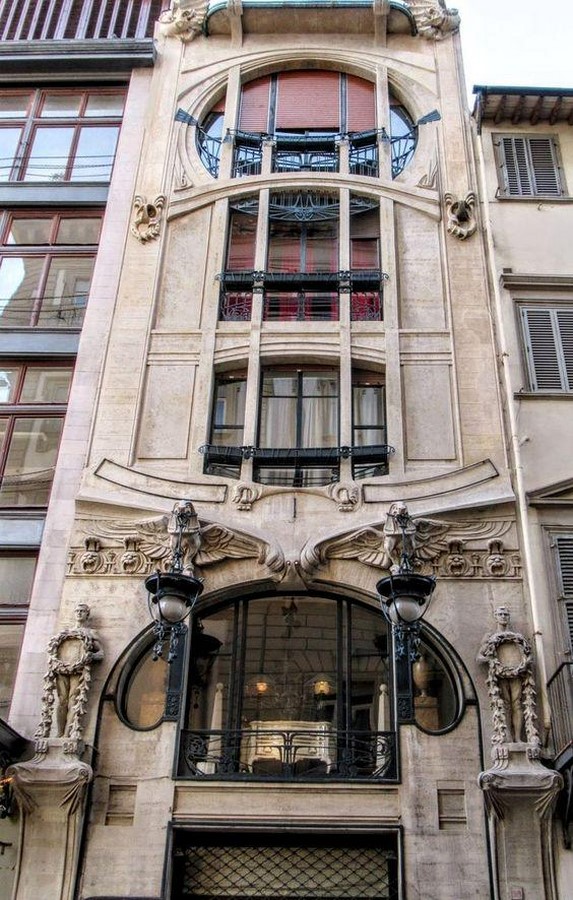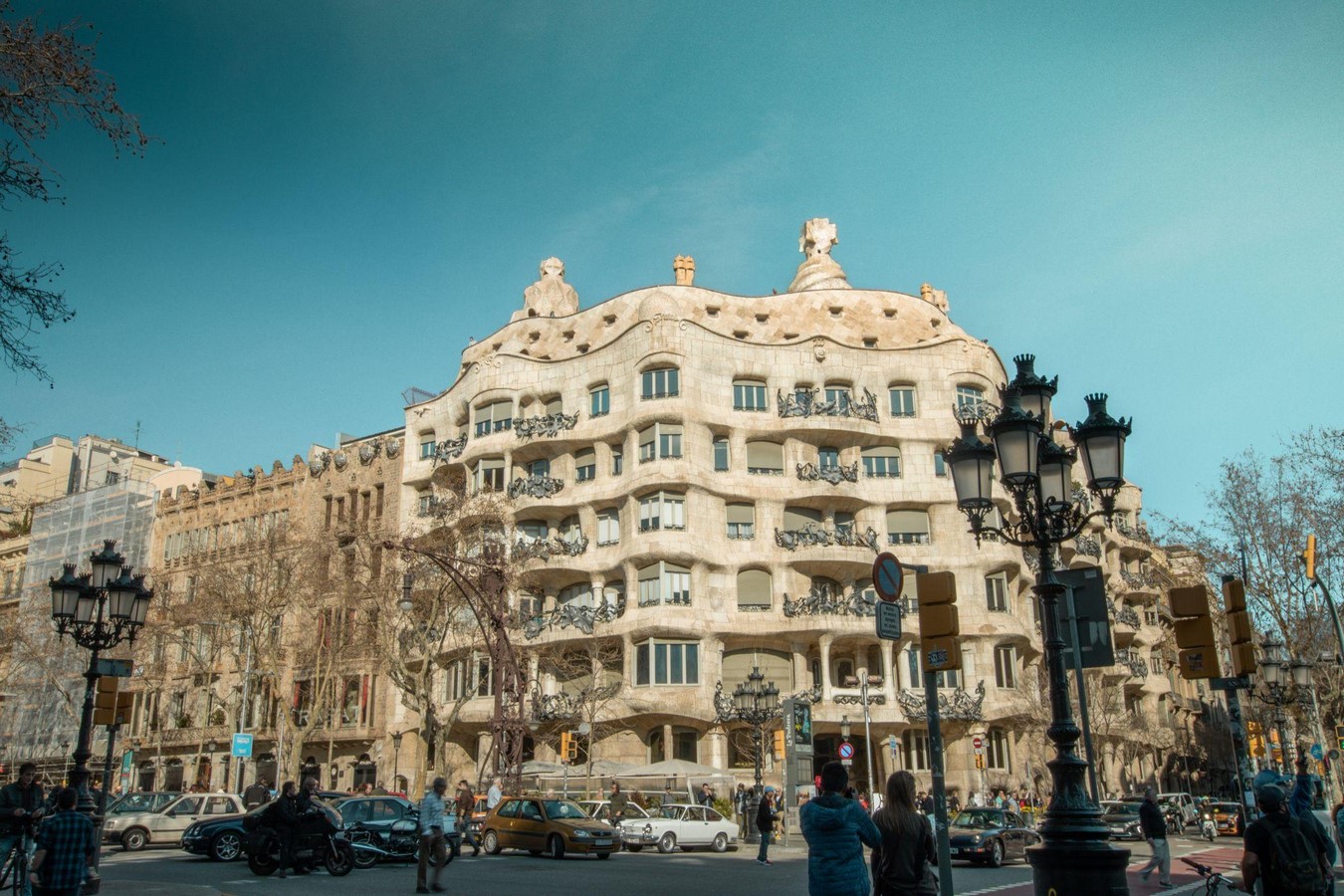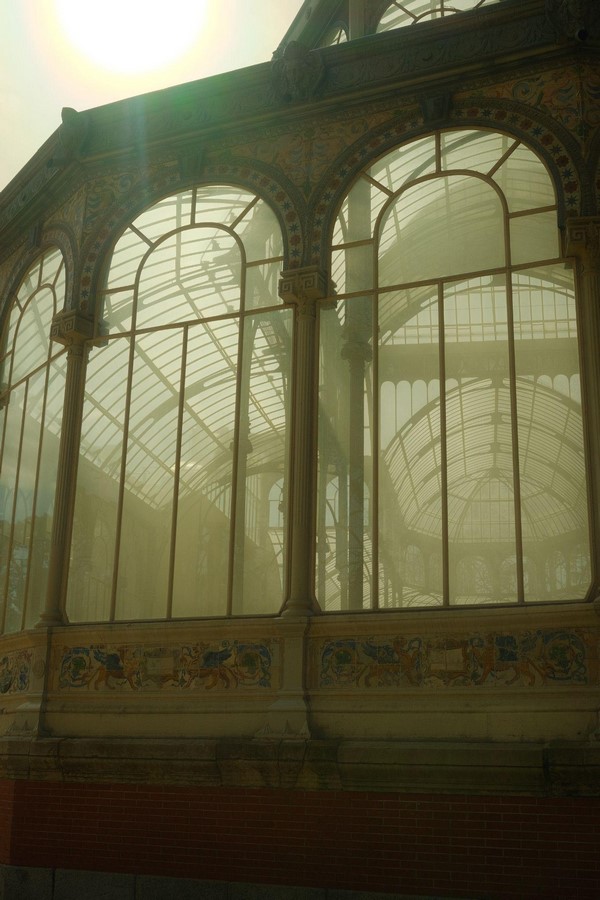In continental Europe, the late nineteenth century was a time of largely tranquillity and prosperity. Economic expansion led to a greater upper and upper-middle class, which was able to finance novel and experimental design approaches. With minor expansion into Germany, Spain, and the Scandinavian countries, Belgium and France rose to prominence as the primary areas for the creation of Art Nouveau. Vienna became known as the Vienna Secession in Austria. As travel became more accessible and communication brought goods and artworks into European culture, Western knowledge of design in remote regions, such as the Far East (especially Japan), developed. It is only in hindsight that it has become possible to see commonalities and relationships that justify speaking of Art Nouveau as “a movement.” Even the term Art Nouveau had no currency at the time the movement was developing; it was the name of a Paris shop whose wares displayed the qualities that were characteristic of the movement.

Reforming the industrial arts
Art Nouveau was the first systematic attempt to replace classical systems of architecture and the decorative arts from the 17th century. It was associated with the rise of the new industrial bourgeoisie. Therefore, it was a Reform of the industrial arts. Art Nouveau was essential in rejecting the historic revivals that dominated the art world at the period, in addition to revamping the industrial arts. Casa Mila designed by Gaudi who was a prominent modernist in Art Nouveau is an example that suggests that there is no straight line in nature. Artists and architects desired to break all connections to classical times and bring down the barriers between the fine arts and applied arts. Before the Art Nouveau movement gained traction, many painters and artisans imitated the fashions of earlier times. It abandoned the Post-Renaissance convention of realism. The Japanese arts, the Middle Ages, and Rococo mainly inspired it, which was the outcome of the transformation in the industrial decorative arts. By embracing invention and creativity, Art Nouveau aimed to break free from this heritage (Greenhalgh, 2000). Art Nouveau designers produced a distinctive aesthetic that was both contemporary and forward-thinking by integrating elements from nature and geometric patterns.

Art Nouveau’s formal characteristics
A rejection of Victorian designs and of historic replication in revivals or through eclectic mixtures of precedents are qualities that distinguish Art Nouveau design as a distinctive development. Exposure to making use of contemporary tools, materials, industrial processes, and innovations. Architectural and interior design that integrates sculpture and painting and has a clear relationship to the fine arts. The spatial organization of its parts according to function rather than the rules of symmetry and proportion. In the philosophy of the Art Nouveau movement, art should be a way of life. The Organic shapes such as flowers, vines, shells, bird feathers, and insect wings, inspire the application of pretty ornaments, decoration, and abstract forms created from these sources. The Art Nouveau movement preferred organic and asymmetrical shapes drawn from nature in order to depart from the mass-produced and standardized designs of the Industrial Revolution. In both the fundamental structural components and the decoration, curvilinear forms predominate. The vibrant and bold colors derived from nature were used to create a feeling of escape and fanaticism. The dominant themes that were used in the ornamentation and structural components were the curvilinear forms. There was the significance of iron and glass materials, and their properties as generators of form, and exposure of the armature of the building. The origin of the S-curves or “whiplash” curves, which are typically regarded, as the relationship to the naturally curved and flowing forms. Art Nouveau was underlined by a particular way of thinking about contemporary society, attempting to redefine the concept and nature of the works of art so that art would not overlook any everyday object, no matter how utilitarian.

Attitude in communicating through symbols
Additionally to aesthetics, Art Nouveau desired to express more ideas, concepts, and sentiments through its designs. Symbolism had a large influence on Art Nouveau, with artists using symbols to represent and show a multitude of concepts. It is considered a new form of decoration ornamentation based on both natural and geometric forms. The harmony between nature and artifice, for example, was portrayed by the use of flowing lines and organic forms, while the presence of certain motifs, like the peacock or the dragonfly, signified various facets of the human experience (Whitfield, 2000). Using symbolic forms and motifs, artists sought to link more ideas and emotions in the Art Nouveau movement. Whether it was a flower representing femininity or a geometric shape connoting stability and balance, every component in an Art Nouveau composition was chosen purposefully to evoke specific ideas or emotions.

Conclusion
Incorporating aesthetic expression, uniqueness, and artisanship into the industrial arts, the Art Nouveau movement signified a reform of the field. It turned down the historical revivals of the day in favor of a more creative, unique design strategy, and reformed industrial art. The distinctive formal qualities of Art Nouveau, which took inspiration from nature and geometry, were clear indications of its reformation of the industrial arts. Additionally, Art Nouveau used symbols to communicate, enabling artists to express efficiently ideas and messages through their works of art. Art Nouveau transformed the decorative arts and had a long-lasting influence on the art world by combining both natural and geometric shapes. Art Nouveau made a lasting impression on the world of art and design by fusing symbolism, geometry, and nature in a distinctive way that established it as a major advancement in the industrial arts.
References:
- Duncan, A. (1994). Art Nouveau. London: Thames and Hudson.
- Floud, P. (1952). Art Nouveau. The Burlington Magazine, 94(596), 322–325. http://www.jstor.org/stable/871001
- Grady, J. (1955). Nature and the Art Nouveau. The Art Bulletin, 37(3), 187–192. https://doi.org/10.2307/3047607
- Greenhalgh, P. (2000). Art Nouveau: 1890-1914. London: V&A Publications.
- John Keefe. (1976). The Art Nouveau in Belgium and France, 1885-1915. Bulletin of the Art Institute of Chicago (1973-1982), 70(5), 2–7. https://doi.org/10.2307/4113151
- Lancaster, C. (1952). Oriental Contributions to Art Nouveau. The Art Bulletin, 34(4), 297–310. https://doi.org/10.2307/3047441
- Massey, A. (2020). Interior design since 1900. London: Thames & Hudson, ch.1
- Pile, J. F., Gura, J., & Laurence King Publishing. (2018). A history of interior design. London: Laurence King Publishing, pp.287-298
- Whitfield, J. (2000). Art Nouveau: The Essential Reference. London: Thames and Hudson.















